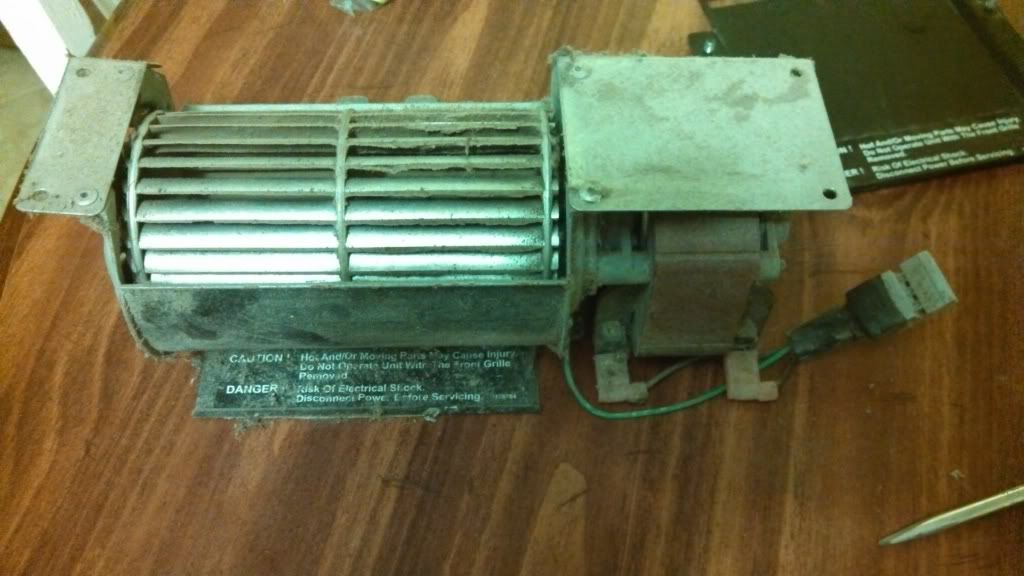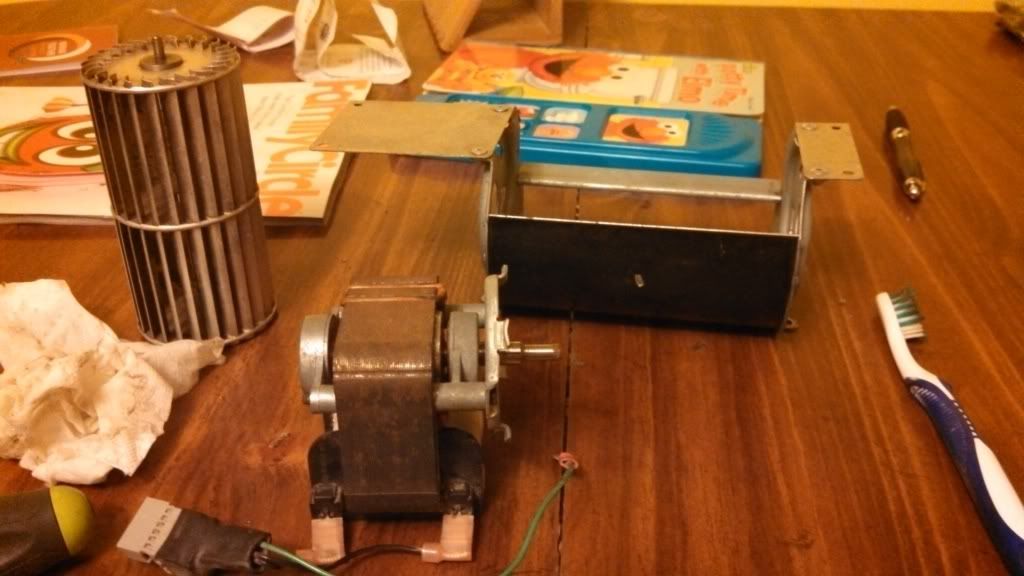Shaded pole motor. No brushes, not much starting torque but quiet running.
Shaded-pole motor - Wikipedia, the free encyclopedia
often used in locations where you need a quiet running motor
with low vibration.
lacking a start winding & switch and or capacitor or brushes generally makes for a long service life.
*Typically* have spherical, lube impregnated bronze bushings.
Watch your alignment when reassembling/ snugging up the through bolts,
as the diecast end frames may have a bit of clearance in them
and with the spherical bearings
it's easy to get the motor assembled in a twist.***
also self tapping screws may have pulled up the metal (a burr)
at the begining of the holes and can cause the frames to sit in a twist
or work loose later
when the burr flattens after running a while. (watch for loose shaving from threads also)
Then you get to take it all out again and maybe have a bent fan wheel too.
***That can cause re-fitment problems in the duct work and/or rubbing parts later when a little dust gets built up and the resulting wobble uses the smaller
that normal gap
created by the crooked motor assembly.
Dust really drys out the lube in those pressed metal/pre-lubed bearings
and you may begin to get the rumble or squeaking.
By that point the shaft is usually a bit worn also and cleaning & relubing
tends to be a stopgap measure to buy some time to find a replacement.
Can't tell from the viewing angle, but the end frames look large enough
to possibly have ball bearings.
If so, all the usual maintenance answers for that type apply.
Are they sealed (probably, considering the application) or open?
will dictate your options of course.
Loose pop rivets?
Personally, I like the idea of replacing with fine thread screws and nuts.
Be sure to use some thread locking compound on them.
You don't want them working loose, once installed in the middle of your equipment.
(was likely a factor in the manufacturer's choice of rivets)
In a pinch, You can pinch.
Take a pair of locking pliers and just barely set the screw to clamp
and squeeze/crush the rivet a bit. Repeat a few times while tightening
the plier screw just enough to cause a bit more pinching pressure.
But it's only a temp answer really.
Yeah You can see why I vote for replacing with fine pitch screws and nuts
or drill out and re rivet.








